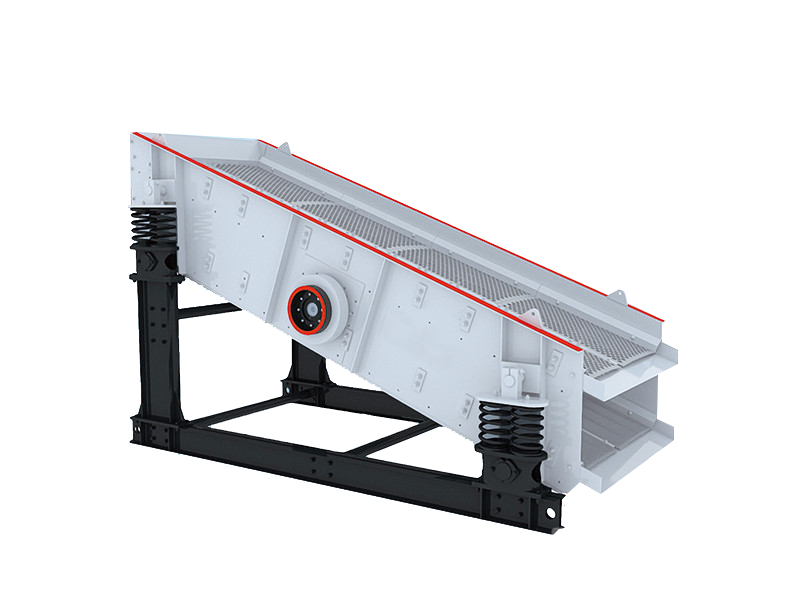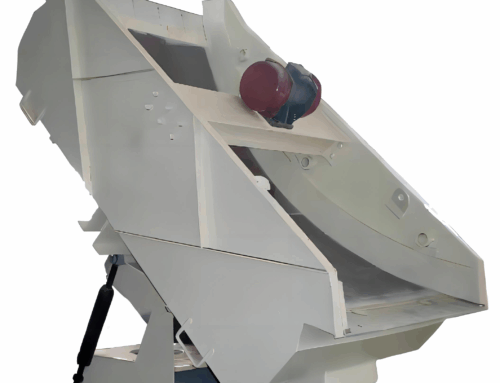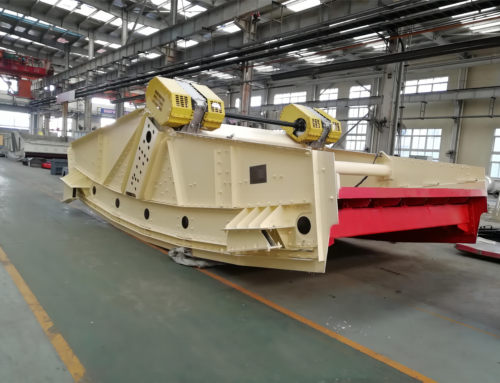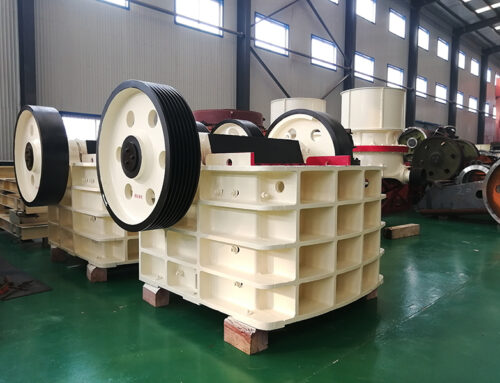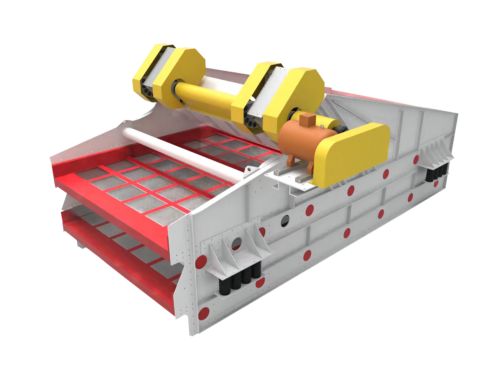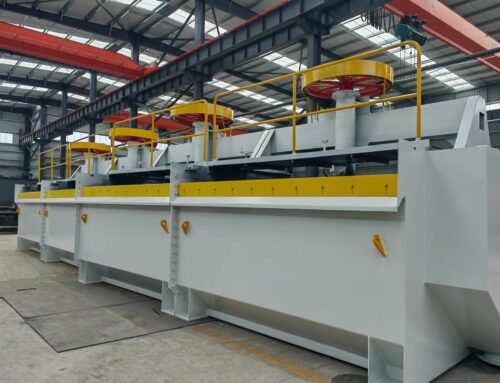Linear vibrating screen sieve is not clean how to do, linear vibrating screen as a common screening equipment in industrial production, widely used in mining, chemical, food, building materials and other fields. Its main working principle is through the vibration motor generated by the excitation force, so that the screen surface produces reciprocating linear vibration, the material is thrown up on the screen surface and forward for linear motion, so as to achieve the separation of different particle size materials. However, in the actual production process, there will often be a screen is not clean, which will not only affect the production efficiency, but also may lead to unqualified product quality. Therefore, this article in-depth analysis of linear vibrating screen sieve not clean reasons, and explore how to improve its screening effect.
一.The linear vibrating screen sieve is not clean common cause analysis
1.The equipment’s own factors
sieve problem
The size of the aperture of the screen mesh is a key factor in whether the size of the material to be screened is matched with the particle size. If the screen mesh aperture is too large, the materials smaller than the set particle size may be mixed into the screen, resulting in low purity of the screened material; on the contrary, if the aperture is too small, it will make it difficult for the materials that meet the requirements of the particle size to pass through the screen mesh, resulting in insufficient output of the screened material, which is also prone to lead to screen clogging. In addition, the material and weaving of the screen will also affect the screening effect. For example, the metal screen mesh high strength, but poor flexibility, easy to wear due to the impact of the material and friction; plastic screen mesh flexibility is good, but the strength is relatively low, suitable for screening more corrosive or smaller size of the material. Insufficient tension of the screen is also a common problem, the tension is not enough will lead to the screen in the vibration process to produce relaxation and deformation, affecting the trajectory of the material, thus reducing the screening efficiency. The parameters of the vibration motor are set unreasonably
The vibration motor is the power source of the linear vibrating screen, and its parameter settings directly determine the vibration intensity and frequency of the screen surface. The rotational speed of the vibration motor and the angle of the eccentric block are two key parameters. Too high rotational speed will make the screen surface vibration frequency is too high, the material in the screen surface jump height is too large, the residence time is too short, resulting in fine-grained materials can not pass through the screen mesh in time; rotational speed is too low will make the vibration intensity is not enough, the material can not be sufficiently loose and stratification, affecting the screening effect. The size of the eccentric block angle determines the size of the vibration direction angle, when the angle is too large, the material on the screen surface forward speed is too fast, shortening the screening time; angle is too small, the material moves forward slowly, may be piled up on the screen surface, also affecting the screening efficiency. Inappropriate screen inclination
The inclination angle of the screen is the angle between the screen surface and the horizontal plane, which has an important influence on the movement speed and residence time of the material on the screen surface. Inclination angle is too large, the material in the sieve surface decline speed, stay time shortened, fine-grained materials can not be screened in time to be discharged from the sieve body; inclination angle is too small will make the material in the sieve surface moving slowly, or even stagnation phenomenon, resulting in a reduction in the utilisation rate of the screen surface, the decline in screening efficiency. In addition, the angle of inclination of the screen surface will also affect the processing capacity of the vibrating screen, which needs to be reasonably adjusted according to the characteristics of the material and screening requirements. Amplitude and frequency mismatch
Amplitude and frequency are two important indicators to measure the vibration strength of linear vibrating screen. Amplitude is too large, the material on the screen surface is thrown up too high, easy to cause material splash and loss, but also increase the wear and tear of equipment and energy consumption; amplitude is too small can not make the material fully loose and stratification, affecting the screening effect. Too high a frequency will make the vibration of the material on the screen surface is too violent, resulting in fatigue damage to the screen mesh; too low a frequency can not provide enough vibration energy, so that the material is difficult to pass through the screen mesh. Therefore, the amplitude and frequency need to be based on the nature of the material, particle size distribution and screening requirements for a reasonable match.
2.Operation and Maintenance Factors
Uneven feeding
In the working process of linear vibrating screen, uneven feeding is one of the common reasons that lead to the screen not being clean. If the feeding volume is large or small, or the material is unevenly distributed on the screen surface, it will make the screen surface locally overloaded, while other areas are underloaded, thus affecting the overall screening effect. For example, when the feeding material is concentrated on one side of the screen surface, it will cause the material on that side to pile up too thick, and the screening is not sufficient, while the screen surface on the other side is not fully utilised. Excessive feed rate
Excessive feed rate can cause the screen surface to be instantly overloaded with material beyond its capacity. The material on the screen surface can not be fully screened before being discharged, resulting in a large number of unscreened fines in the screened material, and the purity of the screened material will also be affected. In addition, the feed rate is too fast may also lead to the formation of material on the screen surface clogging, further reducing the screening efficiency. Screen clogging and breakage
Screen clogging is a problem often encountered by linear vibrating screen in the screening process, especially when screening materials that are wet, sticky or contain more fine powder. The fine powder and impurities in the material will be adhered to the mesh of the screen mesh, gradually forming a blockage, so that the effective screening area of the screen mesh is reduced, and the screening efficiency is reduced. Sieve mesh damage will lead to larger particle size materials mixed into the sieve, affecting product quality. Screen clogging and damage if not found and dealt with in a timely manner, will further aggravate the deterioration of the screening effect.
3.Material characteristic factors
Material humidity
The humidity of the material is one of the important factors affecting the screening effect of linear vibrating screen. When the humidity of the material is large, the moisture in the material will make the fine-grained material bonded to each other, forming clumps, and it is difficult to pass through the screen. At the same time, the wet material is easy to adhere to the screen, blocking the screen holes and reducing the effective screening area of the screen. For materials with high water content, ordinary linear vibrating screen is often difficult to achieve the ideal screening effect, and need to take special processing measures. Material particle size distribution
The particle size distribution of the material has a significant impact on the screening effect. If the material particle size close to the screen hole size of the particle content is high, that is, the so-called ‘critical particles’ more, these particles in the screen surface is prone to ‘jamming’ phenomenon, resulting in a decline in screening efficiency. In addition, the ratio of coarse and fine particles in the material will also affect the screening effect. When the content of coarse-grained materials is high, fine-grained materials are easy to pass through the screen in the gap between the coarse-grained materials, and the screening efficiency is higher; on the contrary, when the content of fine-grained materials is high, it is easy to form a pile up on the sieve surface, which affects the coarse-grained materials screening. Material Viscosity
Materials with high viscosity are easy to adhere to the sieve mesh, forming a layer of sticky film, which prevents the material from passing through. At the same time, the viscosity of the material on the screen surface fluidity is poor, it is difficult to fully loose and stratification, resulting in poor screening results. For example, when screening materials containing more viscous impurities, it is necessary to increase the vibration intensity or take other auxiliary measures to improve the screening effect. Shape of material particles
The shape of material particles also has a certain influence on the screening effect. Generally speaking, spherical or nearly spherical particles are easier to pass through the screen, while flakes, needles or irregularly shaped particles are prone to clogging at the screen holes. For example, when screening flaky materials, due to its special geometric shape, it is often necessary to use larger screen holes or special screen structure to achieve a better screening effect.
二.The method of improving the screening effect of linear vibrating screen
1.Equipment adjustment and optimisation
Reasonable selection and replacement of screen mesh
According to the characteristics of the material and screening requirements, select the appropriate screen mesh aperture, material and weaving method. In selecting the screen aperture, the required screening material size and screening efficiency should be considered, generally speaking, the screen aperture should be slightly larger than the upper limit of the required screening material size. For occasions with high screening precision requirements, you can choose multi-layer screen, through the combination of different aperture screen, to achieve more accurate grading. Regularly check the wear and tear of the screen mesh, timely replacement of broken or clogged screen mesh, to ensure the effective screening area of the screen mesh. At the same time, pay attention to the tension of the screen mesh, the installation of the screen mesh should use a special tensioning device to ensure that the screen mesh in the vibration process to maintain a taut state. Optimise the parameters of the vibrating motor
According to the nature of the material and screening requirements, reasonably adjust the rotational speed of the vibrating motor and the angle of the eccentric block. Generally speaking, for the larger particle size, specific gravity of the material, should choose a higher rotational speed and larger eccentric block angle, in order to increase the vibration intensity and the forward propulsion speed of the material; for the smaller particle size, lighter specific gravity of the material, should choose a lower rotational speed and smaller eccentric block angle, in order to extend the residence time of the material in the sieve surface, to improve the screening efficiency. When adjusting the parameters of the vibration motor, it should be noted that the parameters of the two vibration motors should be set consistently to ensure the symmetry and stability of the screen vibration. Adjust the screen surface inclination angle
According to the characteristics of the material and screening requirements, adjust the screen surface inclination angle appropriately. Usually, the adjustment range of screen surface angle is between 0°-15°. For the liquidity of the material, you can appropriately increase the sieve surface angle to improve the processing capacity of the material; for the liquidity of the material, you should reduce the sieve surface angle, in order to prolong the residence time of the material in the sieve surface, to improve the screening effect. When adjusting the screen surface angle, attention should be paid to the overall stability of the equipment to avoid tilting the equipment or material splashing due to the large angle. Matching Amplitude and Frequency
Determine a suitable combination of amplitude and frequency through testing and debugging. Generally speaking, there is a certain matching relationship between amplitude and frequency, and for different materials and screening requirements, it is necessary to find an optimal balance. In practice, you can first fix the amplitude, adjust the frequency, observe the screening effect; then fix the frequency, adjust the amplitude, make a comparative analysis, and finally determine the best amplitude and frequency parameters.
2.Operation and maintenance optimisation
Ensure uniform and stable feeding
Install suitable feeding equipment at the feeding end of the linear vibrating screen, such as vibrating feeder, belt conveyor, etc., to ensure that the material enters the screen body uniformly and stably. The feeding speed of the feeding equipment should be matched with the processing capacity of the linear vibrating screen, to avoid the feeding volume being suddenly large or small or concentrated in a certain area of the screen surface. At the same time, pay attention to the direction of feeding, the material should be uniformly distributed along the width direction of the screen surface, in order to make full use of the effective area of the screen surface. Control feeding speed
According to the model, specification and material characteristics of the linear vibrating screen, it is reasonable to control the feeding speed. The feeding speed can be achieved by adjusting the rotational speed of the feeding equipment or the gate opening. In the production process, it should pay close attention to the material accumulation on the screen surface, and when it is found that the material accumulation on the screen surface is too thick, the feeding speed should be reduced in time; when the material on the screen surface is less, the feeding speed can be increased appropriately to give full play to the processing capacity of the equipment.
3.Material pre-treatment
Reduce the humidity of the material
For materials with large humidity, pre-treatment measures such as drying, airing, etc. can be taken to reduce the moisture content of the material and improve the fluidity and screening performance of the material. Adjust the particle size distribution of the material
If the critical particle content in the material is high, the critical particles can be separated in advance by pre-screening methods to reduce their impact on the screening process. Improve material viscosity
For materials with high viscosity, appropriate amount of dispersant or lubricant can be added to reduce the viscosity of the material and improve the fluidity of the material.
The reasons why the linear vibrating screen is not clean are manifold, involving the equipment itself, operation and maintenance factors and material characteristics. To improve the screening effect of linear vibrating screen, it is necessary to start from the adjustment and optimisation of equipment, operation and maintenance optimisation, material pretreatment, and the use of new technology and equipment, etc., and comprehensively consider the impact of various factors to develop a reasonable solution.

